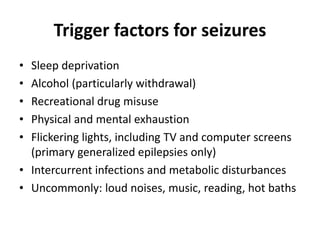A nurse in the emergency department is caring for a child who has a temperature of 39.1° C (102.4° F) and a suspected diagnosis of bacterial meningitis. Which of the following actions should the nurse take first?
Administer an antipyretic to the child.
Dim the lights in the child's room.
Implement droplet precautions for the child.
Prepare the child for a lumbar puncture.
The Correct Answer is C
A. "Administer an antipyretic to the child." While managing fever with antipyretics is important, it is not the immediate priority. Ensuring the child's safety and preventing the spread of infection are more urgent.
B. "Dim the lights in the child's room." While dimming the lights can help reduce discomfort and sensitivity in a child with meningitis, it is not the first priority. Implementing precautions and addressing infection control is more critical initially.
C. "Implement droplet precautions for the child." Bacterial meningitis is a communicable disease that can be spread via respiratory droplets. Implementing droplet precautions is crucial to prevent the spread of the infection to others and protect healthcare workers. This action should be taken first to ensure proper infection control.
D. "Prepare the child for a lumbar puncture." A lumbar puncture is an important diagnostic procedure for confirming bacterial meningitis, but it should only be performed after appropriate precautions are in place. Ensuring infection control measures are followed first is essential before proceeding with any diagnostic or treatment procedures.

Nursing Test Bank
Naxlex Comprehensive Predictor Exams
Related Questions
Correct Answer is C
Explanation
Choice AReason:
Exposure to secondhand smoke is incorrect. While exposure to secondhand smoke isn't healthy for anyone, it might not be a primary trigger for seizures in most cases. However, for some individuals, exposure to certain environmental toxins or irritants might exacerbate their condition, though this varies from person to person.
Choice BReason:
Decreased temperature is incorrect. While extreme temperatures (both hot and cold) can potentially trigger seizures in some individuals, decreased temperature alone might not be a common trigger compared to other factors.
Choice C Reason:
Lack of sleep is correct. Sleep deprivation can be a significant trigger for seizures in people with epilepsy or seizure disorders. Maintaining a regular sleep schedule and ensuring adequate sleep is an important aspect of managing seizures in these individuals.
Choice D Reason:
Prolonged headache is incorrect. Headaches can sometimes be a warning sign or an aura before a seizure for some individuals, but having a headache alone might not directly trigger a seizure for most people with a seizure disorder. However, there can be a relationship between headaches and certain types of seizures in specific cases.

Correct Answer is D
Explanation
Choice A Reason:
Encourage frequent physical activity to increase bone mass: While physical activity is generally beneficial for overall health, in the case of osteomyelitis, encouraging excessive or frequent physical activity might exacerbate pain, discomfort, and the risk of further bone injury. Controlled and appropriate physical activity may be recommended, but it should be individualized based on the child's condition and the affected area.
Choice B Reason:
Provide a high-calorie, low-protein diet: In osteomyelitis, a balanced and nutritious diet is important to support the child's overall health and aid in recovery. However, a high-calorie, low-protein diet would not be suitable for combating infection or supporting healing. Adequate protein intake is essential for tissue repair and immune function.
Choice C Reason:
Initiate contact precautions for the child: Osteomyelitis is not typically transmitted from person to person. It's an infection within the bone that doesn't require contact precautions for prevention of spread among individuals. Treatment primarily involves antibiotics and sometimes surgical drainage, but it doesn't necessitate isolation precautions.
Choice D Reason:
Maintain a patent intravenous catheter: Antibiotics are the mainstay of treatment for osteomyelitis, and they are usually administered intravenously for an extended period to effectively eradicate the infection. Maintaining a patent intravenous catheter ensures continuous access for medication administration.
Whether you are a student looking to ace your exams or a practicing nurse seeking to enhance your expertise , our nursing education contents will empower you with the confidence and competence to make a difference in the lives of patients and become a respected leader in the healthcare field.
Visit Naxlex, invest in your future and unlock endless possibilities with our unparalleled nursing education contents today
Report Wrong Answer on the Current Question
Do you disagree with the answer? If yes, what is your expected answer? Explain.
Kindly be descriptive with the issue you are facing.
